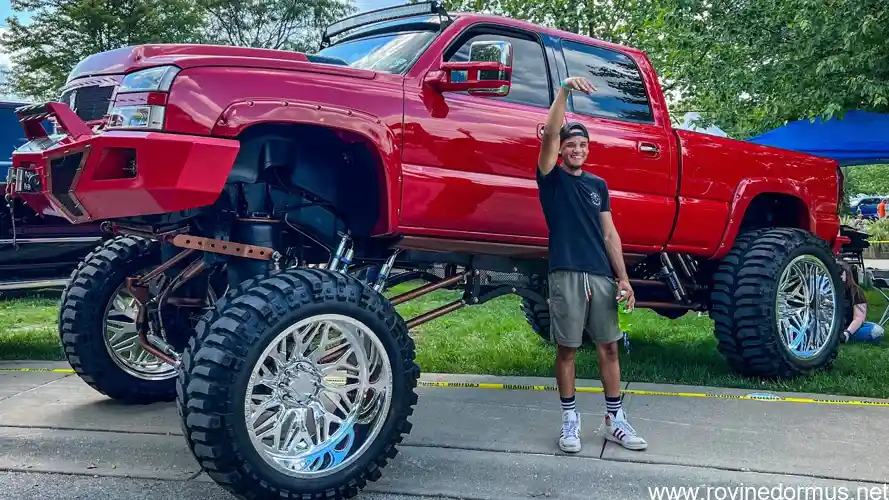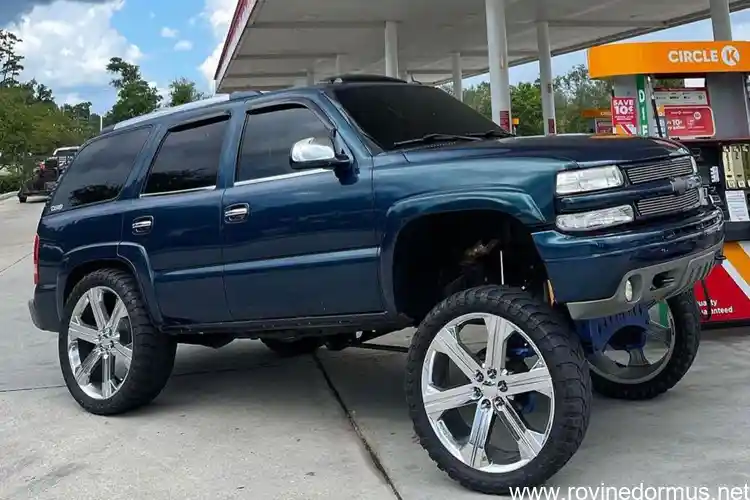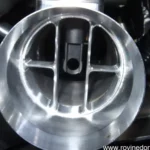Squatting trucks, a modification that lowers the rear end of a pickup truck, have gained popularity in recent years. However, this modification raises concerns about safety, both for the drivers of these vehicles and for others on the road. In this blog post, we will delve into the potential dangers of squatted trucks, examining how they impact a vehicle’s stability, handling, and overall safety. We will explore the mechanical issues, visibility limitations, and handling difficulties associated with squatted trucks. By providing a comprehensive overview of the risks involved, we aim to educate readers about the potential consequences of driving or encountering squatted trucks on the road.
Are Squatted Trucks More Prone to Accidents?

Squatting trucks, also known as “stanced” or “lowered” trucks, have become increasingly popular in recent years, but their safety has come under scrutiny. Some experts believe that these heavily modified vehicles are more prone to accidents due to their altered suspension and handling characteristics. If you’re considering squatting your truck, it’s crucial to be aware of the potential risks involved and to weigh them against the cosmetic benefits. In this article, we’ll delve into the specific reasons why squatted trucks may be more susceptible to accidents and provide evidence to support these claims.
We’ll also explore the legal and insurance implications of driving a squatted truck, helping you make an informed decision about whether or not this modification is right for you.
Mechanical Issues
Squatting trucks lead to a shaky ride, presenting a significantly elevated risk of accidents. The lowered suspension compromises stability, creating an environment ripe for rollovers and other hazardous situations. Imagine navigating treacherous roads on a bike with wobbly wheels—that’s essentially the experience of driving a squatted truck. These vehicles sacrifice stability for aesthetics, leaving you vulnerable to losing control in slippery conditions or during sudden maneuvers.
.
Limited Visibility
Are you considering modifying your truck with a squatted stance? While this modification may enhance the vehicle’s aesthetics, it’s crucial to understand the potential risks associated with it. Squatted trucks, often referred to as “Carolina squat” or “Cali lean” trucks, pose a significant safety hazard due to several inherent mechanical and handling issues. These modifications can lead to disastrous consequences, including increased chances of accidents. If you value your safety and the well-being of others on the road, it’s imperative to reconsider the implications of squatting your truck and prioritize maintaining a standard ride height for optimal stability and control.
.
Handling Difficulties
If you’re considering squatting your truck, it’s crucial to be aware of the potential risks and drawbacks. By modifying the suspension and lowering the vehicle, you may inadvertently increase the likelihood of accidents. The lowered stance can cause mechanical issues, visibility limitations, and handling difficulties that could compromise your safety and that of others on the road. Before making a decision, weigh the potential benefits against the increased risks associated with squatting your truck.
.
Exploring the Risks of Driving Squatted Trucks

Driving squatted trucks may seem cool and trendy, but it’s crucial to be aware of the potential risks associated with them. Lowering a truck’s suspension can lead to a host of mechanical issues, limited visibility, and handling difficulties. Let’s delve into the potential dangers of driving squatted trucks and explore how these modifications can compromise your safety on the road.
Suspension Problems
Squatting your truck may seem like a cool way to customize your ride, but it comes with serious risks that you need to be aware of. When you lower the suspension of your truck, you’re significantly altering its stability and handling, which could lead to dangerous situations on the road. In this section, we’ll explore the various risks associated with driving a squatted truck and why it’s crucial to prioritize safety over aesthetics. We’ll delve into specific mechanical issues, visibility limitations, and handling difficulties that can put you and others at risk.
Understanding these risks will help you make an informed decision about whether squatting your truck is worth the potential dangers it poses.
Steering Issues
Driving squatted trucks comes with inherent risks that you should be aware of before getting behind the wheel. One of the biggest dangers lies in the suspension system. Modifications made to squat a truck can compromise the suspension’s ability to absorb bumps and shocks, leading to a rough and uncomfortable ride. This reduced suspension performance can also affect handling, making it more difficult to control the truck, especially during sudden maneuvers or emergency situations.
Additionally, squatting a truck can put excessive stress on the steering components, potentially causing premature wear and tear and increasing the risk of steering failure.
Brake Malfunctions
Squatting your truck may seem like a cool way to customize your ride, but it’s important to be aware of the potential risks it poses. When you lower the suspension of your truck, you alter its center of gravity and handling characteristics, which can make it more difficult to control. This can increase your risk of getting into an accident, especially if you’re not used to driving a squatted truck. Additionally, squatting your truck can put stress on its suspension and steering components, which can lead to premature wear and tear.
In some cases, it can even cause these components to fail, which can be dangerous at high speeds.
How Squatting Affects a Truck’s Stability and Handling

Squatting your truck may seem like a cool modification, but it can significantly impact its stability and handling. By lowering the truck’s ride height, you’re essentially changing its center of gravity, making it more prone to rollovers. This is especially dangerous when cornering or making sudden maneuvers. Moreover, the squatted stance reduces your truck’s cornering ability, making it harder to navigate curves and tight spaces.
Additionally, squatting can put extra strain on your suspension, steering, and brake systems, increasing the risk of mechanical failures and compromising your overall driving experience.
Center of Gravity Changes
Squatting a truck doesn’t just impact its aesthetics; it can also significantly affect its stability and handling. By lowering the ride height, the truck’s center of gravity is altered, making it more prone to rollovers, especially when making sharp turns or driving at higher speeds. Additionally, the lowered suspension reduces the truck’s cornering ability, compromising your control and putting you at risk in emergency situations. The altered suspension geometry can also lead to premature tire wear, further affecting the truck’s stability and handling.
It’s crucial to remember that these modifications can not only jeopardize your safety but also the safety of other road users.
Reduced Cornering Ability
Squatting trucks not only lower your vehicle’s stability but also affect its handling capabilities. By lowering the center of gravity, these trucks become more prone to rollovers, particularly during sharp turns or evasive maneuvers. Additionally, squatting compromises cornering ability, making it difficult to navigate curves safely. This reduced stability and handling can significantly increase your chances of an accident, especially in wet or slippery road conditions.
It’s crucial to prioritize your safety on the road, and if you’re considering modifying your truck by squatting it, it’s imperative to weigh the potential risks and consider alternative options that won’t compromise your stability and handling. Remember, a vehicle’s stability and handling are vital for your safety and the safety of others on the road.
Increased Rollover Risk
Squatting your truck might seem like a cool way to customize your ride, but it comes with some serious risks to your safety and stability on the road. When you lower your truck, you’re essentially changing its center of gravity, making it more likely to roll over, especially when making turns or driving at high speeds. You’ll also notice a significant reduction in your cornering ability, as the lowered suspension limits the truck’s ability to lean into turns. And because your truck is now closer to the ground, you’ll have less ground clearance, which can make it difficult to navigate rough terrain or obstacles on the road.
All these factors combined make squatting your truck a dangerous game, one that could end up costing you your safety or even your life.
Why Squatting Trucks Pose Safety Concerns to Other Drivers

Squatting a truck not only poses safety concerns to the driver but also to other drivers sharing the road. These modified vehicles can create hazardous situations due to their altered dimensions and handling characteristics. The lowered stance reduces visibility, making it difficult for the driver to see other cars and pedestrians, especially at intersections or when changing lanes. Furthermore, the suspension modifications can compromise the truck’s stability, increasing the risk of rollovers and jackknifing.
The limited suspension travel also makes it more challenging to navigate uneven roads or rough terrain, potentially causing loss of control or damage to the vehicle.
Legal and Insurance Implications of Driving a Squatted Truck
Legal and insurance ramifications can also arise from driving a squatted truck. Modified vehicles, including lowered trucks, may not comply with federal or state safety standards, increasing your liability in an accident. Insurance companies might deny coverage or raise premiums due to the elevated risk associated with such vehicles. Furthermore, law enforcement may issue citations or impound squatted trucks that violate safety regulations, leading to fines and potential legal consequences.
Understanding these implications is crucial before altering your truck’s suspension to avoid unexpected legal and financial burdens down the road.
Q1. Are squatted trucks dangerous?
Ans: Yes, squatted trucks can be dangerous due to suspension and handling issues.
Q2. What are the risks of driving a squatted truck?
Ans: Squatted trucks can have reduced visibility, decreased maneuverability, and compromised braking ability.
Q3. Is it illegal to drive a squatted truck?
Ans: In some jurisdictions, it is illegal to drive a vehicle with a suspension system that is lower than the manufacturer’s specifications.
Q4. What are the alternatives to squatting a truck?
Ans: There are a variety of aftermarket suspension options available that allow for lowering a truck without compromising safety.
Q5. Can squatted trucks be made safer?
Ans: Yes, squatted trucks can be made safer by installing upgraded suspension components, such as air bags or coilovers.
Q6. Is it possible to squat a truck legally?
Ans: In some areas, it may be possible to squat a truck legally by obtaining a permit or exemption from local authorities.

I am Senior Project Manager at rovinedormus.net.






Leave a Reply